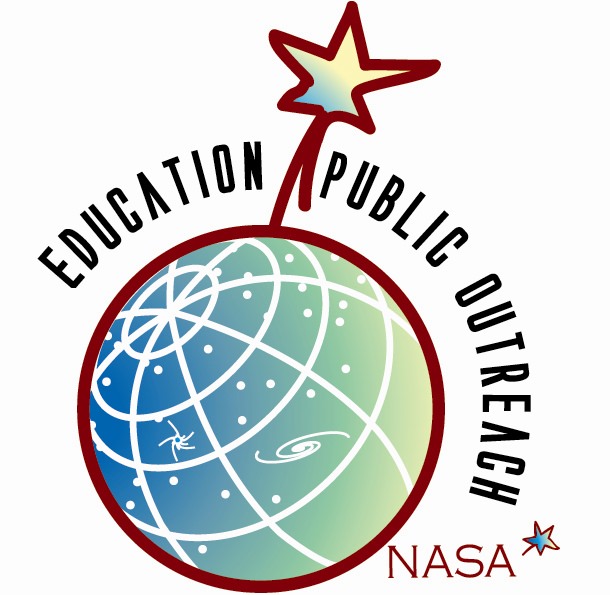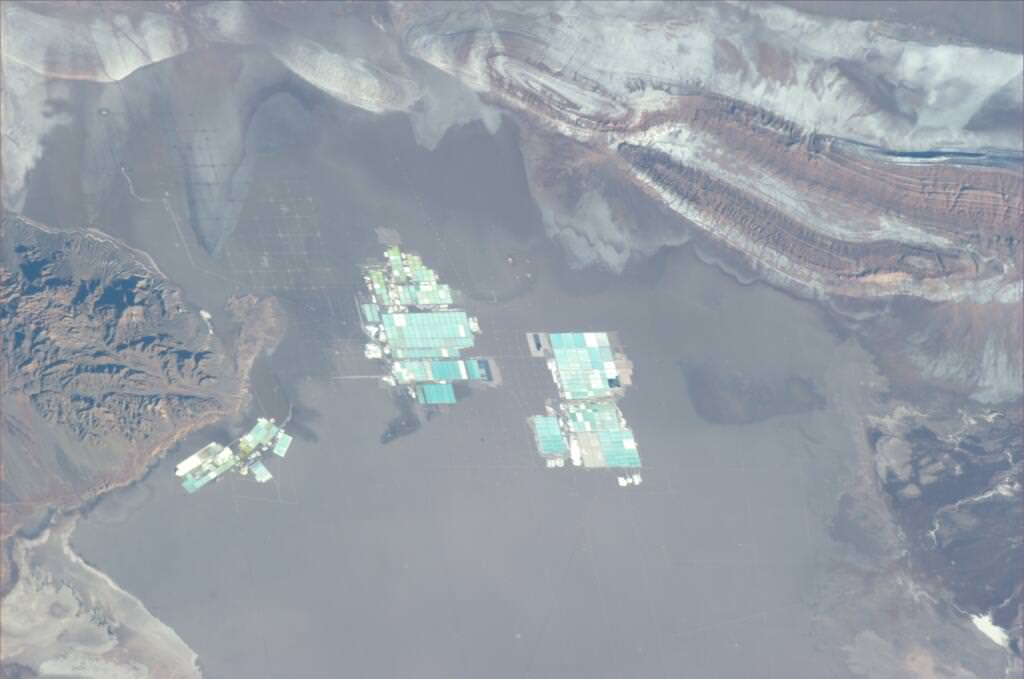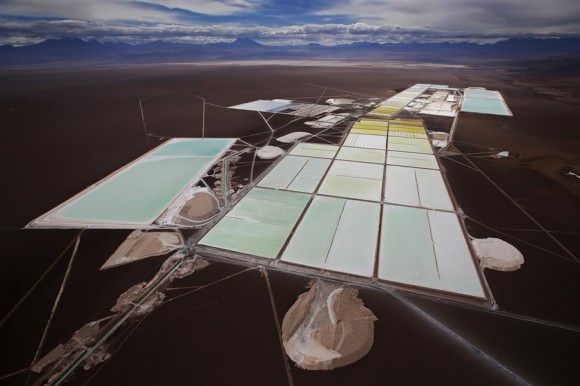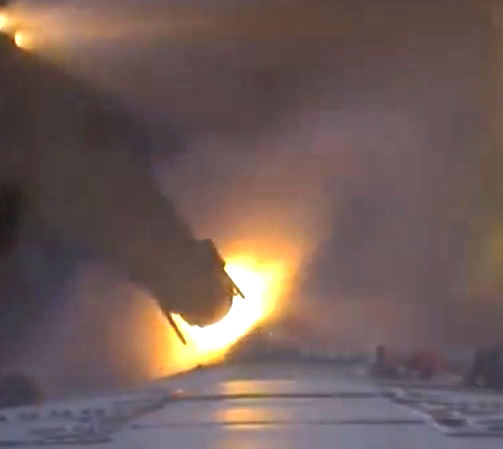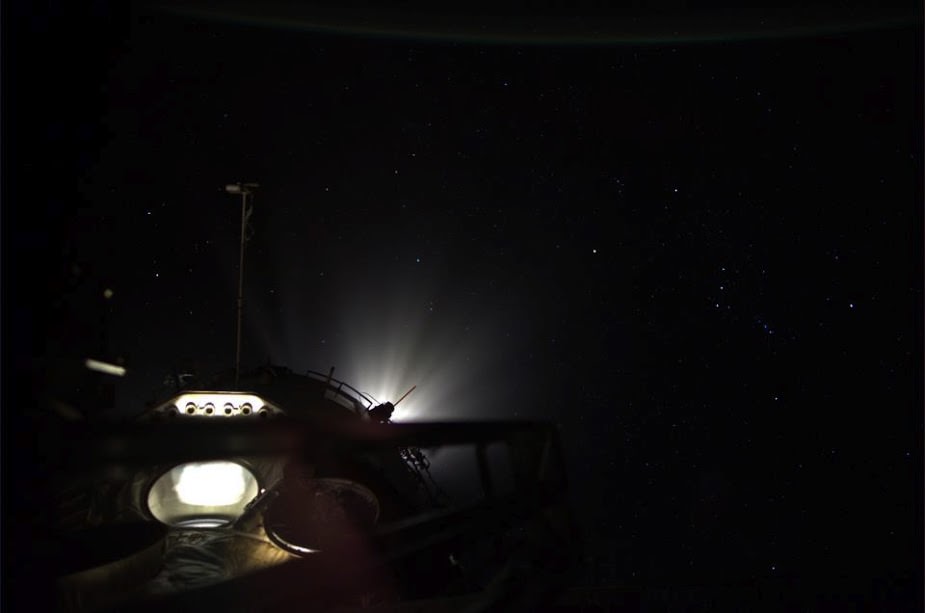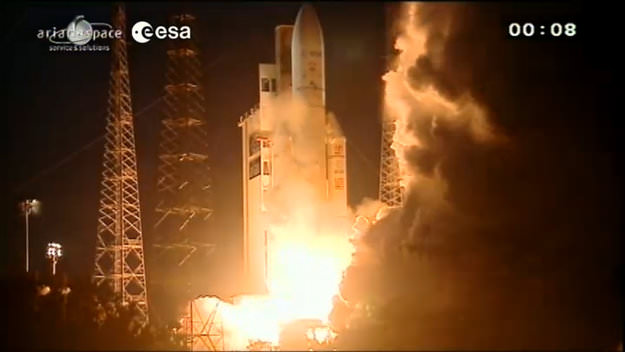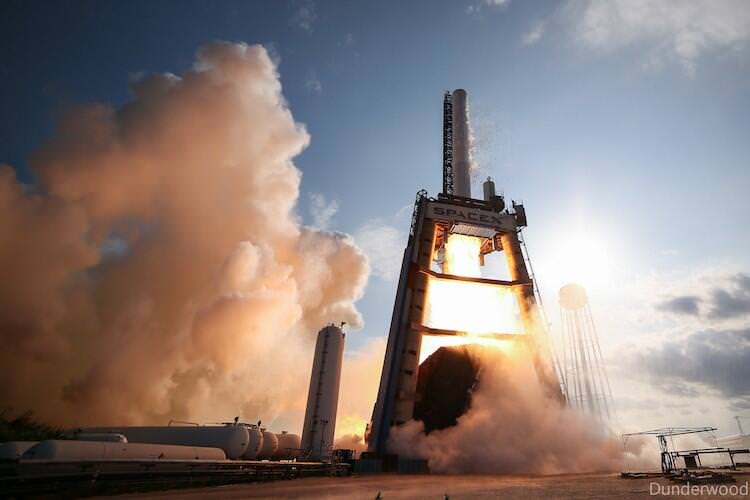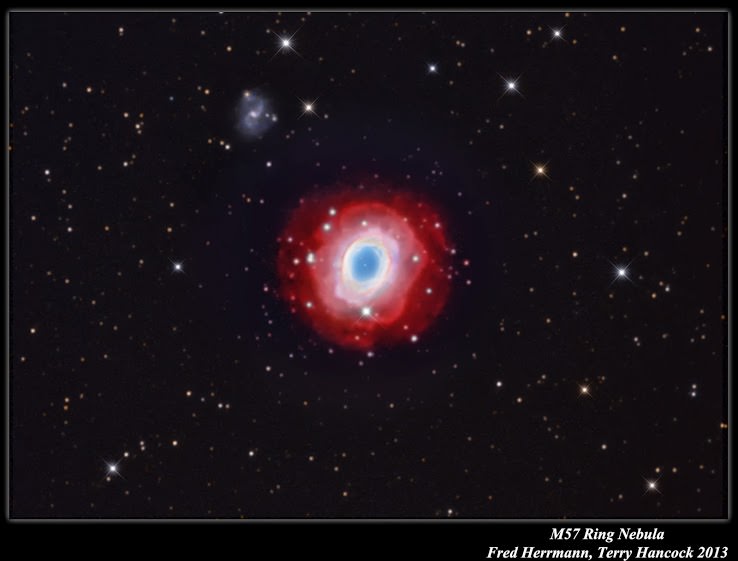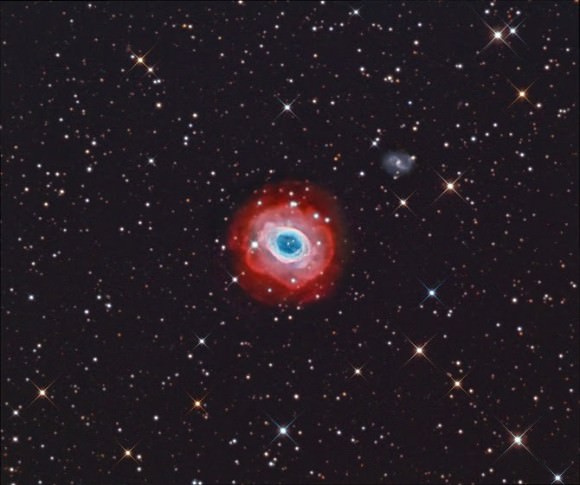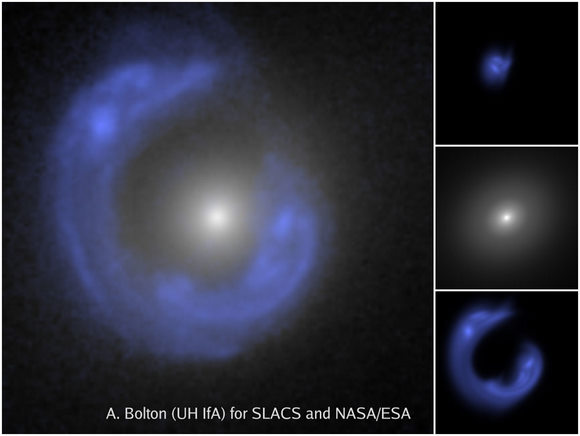The first Moon landing inspired a whole generation of scientists and engineers. And NASA, to its great credit, didn’t rest on those laurels: Outreach programs attached to the different NASA missions became a standard mode of operation. Some have reached legendary status. Without outreach, and the broad public support it engendered, the Hubble Space Telescope quite probably wouldn’t have had its faulty vision corrected.
And, not least thanks to the Internet, many NASA resources are available worldwide, and have a substantial impact on outreach efforts in other countries. (And in case you were wondering: yes, that’s the reason that I as a German am writing this blog post about NASA and, later on, about US policy. We profit from NASA resources – thanks! – and if NASA outreach loses, you lose, and we lose.)
One of the reasons science outreach by NASA and similar organizations is so powerful is the sheer fascination of black holes, distant galaxies, planets around distant stars, human space-travel, the big bang, or plucky little rovers exploring Mars. But there is another important factor, and that is the direct involvement of scientists and engineers who are immersed in, and passionate about, what they do. Quoting from a slightly different context:
“[The] ability to impart knowledge, it seems to me, has very little to do with technical method. […] It consists, first, of a natural talent for dealing with children, for getting into their minds, for putting things in a way that they can comprehend. And it consists, secondly, of a deep belief in the interest and importance of the thing taught, a concern about it amounting to a sort of passion.
A man who knows a subject thoroughly, a man so soaked in it that he eats it, sleeps it and dreams it—that man can always teach it with success, no matter how little he knows of technical pedagogy. That is because there is enthusiasm in him, and because enthusiasm is almost as contagious as fear of the barber’s itch. […] This passion, so unordered and yet so potent, explains the capacity for teaching that one frequently observes in scientific men of high attainments in their specialties […]”
We might not fear the barber’s itch quite as much as they did in the 1920s, when American journalist and essayist, H. L. Mencken, wrote those lines. But Mencken’s main message is as true now as it was back then. The best science outreach projects I’ve seen — and as managing scientist of a Center for Astronomy Education and Outreach I try to keep reasonably up to date — directly involve people whose enthusiasm for their subject is contagious — scientists communicating their own research, or outreach scientists and educators working closely with researchers.
That’s the reason why I’m worried about the future of NASA education and public outreach. There is, right now, a major effort by the Obama administration to restructure federal STEM education efforts (STEM being Science, Technology, Engineering, and Math). Apparently, the committee known as CoSTEM that is the driving force of this initiative didn’t do a very good job in engaging outreach practitioners in a dialogue about the changes, because the first thing many of those active in the field heard about the sweeping changes were ominous statements in the administration’s NASA Budget Proposal for Fiscal Year 2014, published on April 10 (PDF 34 MB).
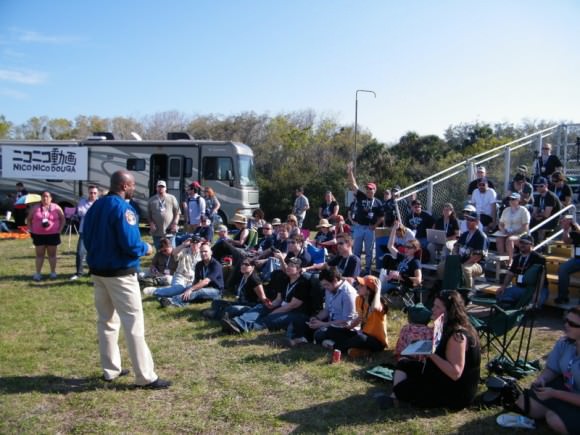
The proposal is somewhat sketchy on the details, but what was there was worrying enough for a number stakeholders to speak up: Phil Plait, who used to be himself involved in mission-based outreach, has commented on the “bad news”, and Pamela Gay, whose group is responsible for CosmoQuest, among other projects, has weighed in (also here) — her group largely depends on the kind of NASA funding that could be eliminated in the restructuring. More recently, the American Astronomical Society has issued a Statement on Proposed Elimination of NASA Science Education & Public Outreach Programs.
On June 4, there was a hearing of the House Committee on Science, Space and Technology (the link has an archived webcast of the hearing, as well as some written statements). Judging by some of the answers at the hearing, the implementation of the restructuring hasn’t been fully worked out yet — but what information is out there is indeed somewhat worrying. It sounds like an efficiency-and-evaluation drive with little regard for the power of scientific passion.
The proposal calls for slashing NASA’s budget for education by almost a third. It promises that NASA’s “education efforts will be fundamentally restructured into a consolidated education program funded through the Office of Education, which will coordinate closely with the Department of Education, the National Science Foundation, and the Smithsonian Institution”. In particular, the consolidation concerns the outreach activities connected directly to the various missions: “mission-based K-12 education, public outreach, and engagement activities, traditionally funded within programmatic accounts, will be incorporated into the Administration’s new STEM education paradigm in order to reach an even wider range of students and educators”.
The Smithsonian Institution will take the lead on informal outreach and engagement. It’s not quite clear what that means, but they will get $25 million to do it. They have apparently promised to interact very closely with the mission agencies they would be “helping” in their role of “clearing house” for this kind of activity. Does that mean that they will become the main agency to develop outreach materials — will NASA missions have to provide them with information about their science, and receive custom-made (or not) outreach kits in return? Or will they have more of an advisory capacity — will they somehow assist NASA outreach units to develop material, and help with the distribution? Your guess is as good as mine.
A number of committee members expressed their concern in this direction, as well, asking about the role of their local institutions such as science museums, STEM initiatives and the like in the new scheme. The answers weren’t very encouraging. There was talk of strong partnerships being developed, but apparently the desire to build partnerships didn’t go as deep as actually trying to communicate with those stakeholders beforehand.
Committee member Elizabeth Esty (D-CT) actually raised the matter that is my main concern in this blog post: she talked about the importance of engaging science practitioners and engineers directly, having them interact with school students; she also talked about the excitement for science that NASA has been so good at generating.
Again, the answers weren’t very encouraging (this is around 1h 40m into the hearing). The NSF representative (Joan Ferrini-Mundy) talked about the increased reach the Department of Education could provide, and the NASA representative (Leland D. Melvin) went down the same road, praising how the Department of Education was helping NASA to make their hands-on activities available in more states than ever before. Neither appeared to have understood that the question was about something altogether different than mere efficiency in the distribution of educational materials.

And while the inspiration by astronauts interacting with school students, or the excitement generated by the direct contact with researchers, was at least mentioned during the hearing, the role of outreach scientists — as mediators with a background in science and a job in science communication — was completely absent from the hearing and, incidentally, from the CoSTEM documents.
To me, all of this appears to add up to a move into precisely the wrong direction. For powerful science outreach, you want to channel the passion of the researchers/engineers through the educators and outreach scientists; to that end, you want the connections between those groups to be as close as possible.
A small-to-medium-size outreach team working directly with one or a few missions fits the bill. Replace local teams with large, centralized entities responsible for a much wider portfolio of activities and missions, and you are bound to lose those immediate connections. So, by all means, consolidate where consolidation makes sense — centralized distribution, centralized services such as graphics or video editing, web services, consultation with experienced educators, a school partnership network coordinated by the Department of Education, or what have you — but mission-based outreach scientists and educators do not fall into that category.
If the “new paradigm” widens the gap between the scientists and engineers on the one hand and the educators and outreach scientists on the other, that’s bad news for NASA outreach.
The good news is that the committee demonstrated considerable interest in the matter — and a healthy dose of skepticism. Several members talked about the questions they had received from constituents and stakeholders about the reform. Some remarked on having seldomly seen the meeting room as crowded.
After June 4, committee members apparently still have two weeks to submit their written questions to the witnesses: to presidential science advisor John Holdren, NSF assistant director in the Directorate for Education and Human Resources, Joan Ferrini-Mundy, and Leland D. Melvin, who’s the Associate Administrator for Education at NASA. And a number of committee members (watch the webcast!) seemed quite aware that there are open questions, reasons for skepticism, and room for discussion.
So there’s your chance to do something for NASA (and other agencies’) outreach: Here is a list of the committee members. Express your concern. Ask them what the changes will mean for existing programs (here is a complete list of the programs concerned). Remind them that this is not only about abstract numbers, but about people. The way things are organized right now, there are many individual outreach scientists, researchers, engineers, educators who’ve spent years gaining experience with, and coming up with innovative ideas for, communicating their science. That’s a considerable resource right there — so what will happen with those people and their expertise under the new scheme?
If you have a favourite mission, outreach program or activity (Chandra, CosmoQuest, Hubble, …), ask the committee members how it will be affected by the consolidation. What will happen to the people who made the program/activity what it is? And do so soon, so the committee members can pass their questions and concerns on to the people responsible for this restructuring. This restructuring seems to be something of a turning point for federally funded science outreach in the US (and, yes, for all of us in the rest of the world who profit from that outreach as well). If you or your children have profited from any of those outreach activities, here’s your chance to give something back.

